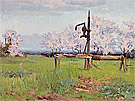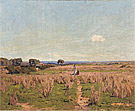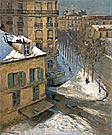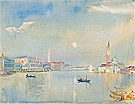Hans Heysen 1877�1968
Hans Heysen is one of Australia’s best-known artists, with a successful career extending over 70 years. He created emblematic pastoral landscapes celebrating the monumentality of the Australian gum tree, becoming the first artist to use eucalypts as a persistent subject in his art.
This exhibition traces Heysen’s development from his early student days in Adelaide and Europe, to his groundbreaking paintings of the Flinders Ranges in South Australia’s north, which added a new dry and sculptural vision to the Australian landscape
This survey exhibition from the Art Gallery of South Australia has been selected from the Art Gallery of South Australia’s significant holdings of Heysen’s work, as well as from the National Gallery of Australia’s collection and those of state galleries, regional galleries and private collections across Australia.
By browsing all 82 works (many accompanied by explanatory texts) you can discover more about Hans Heysen. The works are organised by the same groupings or 'rooms' that you would view them in when visiting the exhibition.
Video transcript: Mystic morn 1904 depicts two young cows moving through a eucalyptus grove in the early morning light. The slender saplings are arranged in a rhythmic Art Nouveau pattern. Heysen painted this work soon after his return to Adelaide after studying in Europe for four years, and it reflects his new awareness of the character of the Australian bush.
In the first drawing, Group of young trees c 1904, Heysen made a tentative sketch, possibly outdoors, depicting sinuous trees and their peeling bark.
The second drawing, Study for �Mystic morn� 1904 is a densely worked compositional study for the oil painting. It shows faint grid lines dividing the image into 16 even rectangles, in preparation for transferring the design onto canvas. This was a method that Heysen used throughout his life to translate his images from drawing into painting. This compositional drawing also includes a man beside the cow on the left, showing that Heysen initially considered including a figure in the painting.
The watercolour, Study for �Mystic morn� 1904, unlike the carefully worked drawing is a freer image, painted in rich strong colours, and using the watercolour medium to capture an intense light. There are no cows in this image, and the trees are more interwoven and intertwined. This watercolour is also related to another oil painting by Heysen, showing a similar eucalyptus grove without cattle, Sunshine and shadow 1904–05 (National Gallery of Victoria, Melbourne).












